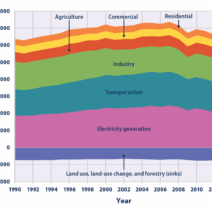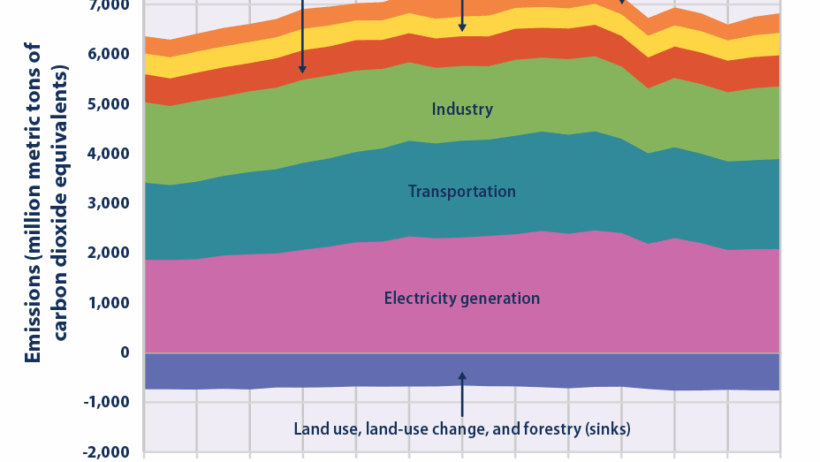In the discourse surrounding climate change, carbon dioxide (CO2) often takes center stage as a primary greenhouse gas. However, the narrative surrounding climate-altering emissions must be broadened to encompass a spectrum of other gases that significantly contribute to global warming. Though CO2 is indeed a crucial element of this environmental crisis, understanding the other culprits is equally vital. Methane (CH4), nitrous oxide (N2O), and fluorinated gases each play unique roles in the atmospheric orchestra of greenhouse emissions, and their impact deserves scrutiny. This article aims to dismantle the common misconception that CO2 is the sole villain in climate change and to unveil the hidden significance of other gases driving environmental degradation.
Methane, a potent greenhouse gas, is often lauded—or lamented—for its extraordinary heat-trapping capability. While CO2 remains in the atmosphere for centuries, methane possesses a much shorter atmospheric lifetime, persisting for approximately a decade before it is oxidized into CO2. This may create a false sense of security; however, over a 20-year period, methane is estimated to be 84-87 times more effective than CO2 at trapping heat. Thus, the urgency of addressing methane emissions cannot be overstated. Methane primarily emanates from agricultural practices, particularly livestock digestion and manure management, as well as fossil fuel extraction and natural gas transportation. This multifaceted source profile necessitates comprehensive strategies for reduction across several sectors, including food and energy.
Turning to nitrous oxide, another greenhouse gas that warrants attention, we find that it has an even more pronounced global warming potential than methane when analyzed over a century. Nitrous oxide is approximately 298 times more effective at retaining heat than CO2 over a 100-year time frame. The most significant contributors to nitrous oxide emissions are agricultural soils, driven by the application of synthetic fertilizers. In our pursuit of increased agricultural productivity, the implementation of these fertilizers often results in increased nitrous oxide release, leading to a paradox wherein attempts to feed a growing population inadvertently exacerbate climate change. Thus, the culprits in the food production system must be scrutinized and rectified in a manner that harmonizes ecosystem health with food security.
Fluorinated gases, comprising a class of industrial chemicals, also merit a place in this conversation on non-CO2 emissions. These gases, which include hydrofluorocarbons (HFCs), perfluorocarbons (PFCs), and sulfur hexafluoride (SF6), are synthetically manufactured for applications ranging from refrigeration to electrical insulation. Although they are present in the atmosphere in much lower quantities than CO2, their heat-trapping potential is astronomically high—some HFCs are thousands of times more potent than CO2. Their unique properties lead to their classification as short-lived climate pollutants (SLCPs). Consequently, the management and eventual phasing out of these substances is crucial in achieving short-term climate goals, contributing to the overarching mission of stabilizing global temperatures.
Understanding the interconnectedness of these gases is essential. The reduction of methane and nitrous oxide emissions, for example, provides not only immediate climate benefits but also co-benefits related to public health and ecosystem stability. As these gases are often linked to agricultural practices, strategies that include sustainable agricultural methods can mitigate emissions while sustaining food production. Practices such as rotational grazing and the use of cover crops can lead to improved soil health, further reducing nitrous oxide emissions over time.
In efforts to combat climate change, global agreements such as the Paris Agreement have increasingly recognized the need to address non-CO2 emissions. The Global Methane Pledge, an initiative launched at COP26, seeks to cap global methane emissions by 30% by 2030. This pledge reflects a burgeoning consensus that effective climate action requires an integrative approach tackling all greenhouse gases rather than concentrating solely on carbon dioxide. Through focused regulatory measures, technological advancements, and international cooperation, significant strides can be made.
Furthermore, the significance of consumer behavior in the realm of non-CO2 emissions cannot be overlooked. The choices made by individuals—ranging from dietary preferences to energy consumption—have outsized implications. For instance, reducing red meat consumption directly correlates with lowering methane emissions. A shift to plant-based diets can lead to remarkable reductions not only in personal carbon footprints but also in overall agricultural methane emissions. In addition, consumers have the power to influence industries by advocating for products that are sustainably sourced and produced with mindfulness towards emissions.
In conclusion, while CO2 remains an emblematic figure in the climate crisis discussion, the narrative must be expanded to include the myriad of other gases contributing to this global dilemma. Methane, nitrous oxide, and fluorinated gases each offer unique challenges and opportunities in the quest for a sustainable future. Addressing these emissions requires vigilant policy-making, innovative agricultural practices, and conscientious consumer choices. Our environmental future hinges on a holistic understanding of all greenhouse gases driving climate change, encouraging immediate action across multiple sectors to ensure a stable and viable planet for generations to come.






